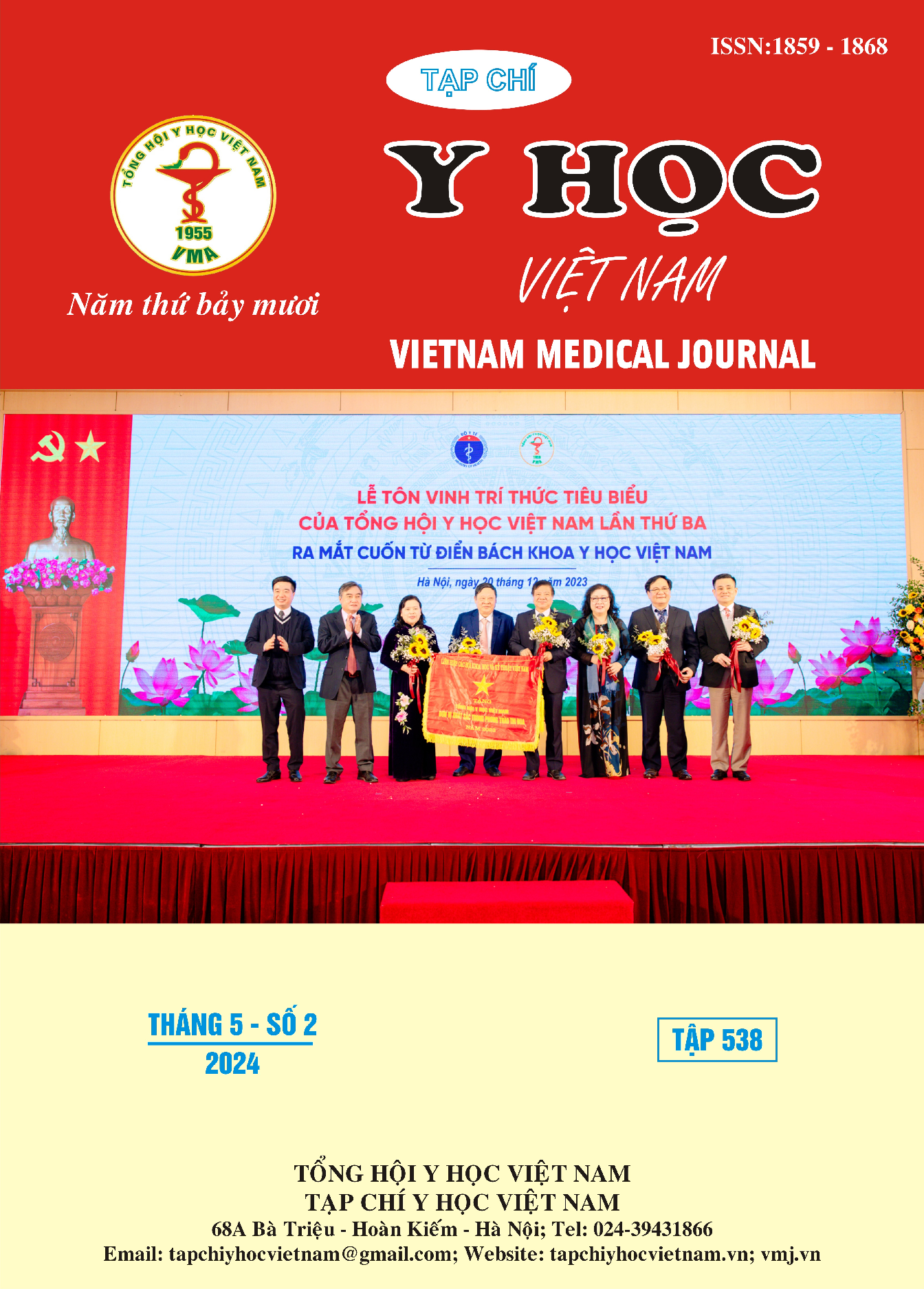OUTCOMES SURGERY OF UPPER GASTROTESTINAL BLEEDING DUE TO GASTRIC AND DOUDENAL ULCERS AT VIETDUC HOSPITAL
Main Article Content
Abstract
Study aims: Description of the clinical, paraclinical characteristics and evaluate treatment of gastrointestinal bleeding due to gastric and đuoenal ulcers at Viet Duc Hospital. Patient and Method: This was a retrospective descriptive study from January 2019 to December 2022, including 12 patients diagnosed with upper gastrointestinal bleeding due to gastric and duodenal ulcers and treated at Viet Duc Hospital. Results: The mean age of the study was 59,8 ± 19,1 years, with a peak incidence in the age group of 50-79 years, a male/female ratio of 2,0. The most common occupation was white-collar workers, accounting for 42.1%. The most common clinical symptom was black stool and upper abdominal pain, accounting for 91,6%. A total of 24.7% of patients requiring intervention had symptoms of shock due to blood loss on admission. The most common time of recurrent bleeding was before 72 hours, accounting for 81.8% in the intervention group. The most common lesion in the surgical group was Forrest IB ulcer (41,6%), location at the small curvature (66,7%) and anterior wall of the duodenum (36,4%), and ulcer size > 2 cm (88,9%). Four surgical methods were performed in succession: distal gastrectomy (63.6%), hemostatic suture with vagotomy (27.3%), and ulcer resection (9.1%). The mortality rate of the surgery method is 1/12 (8,3%). The most common postoperative complications were duodenal stump leak (27.3%), recurrent ulcer (18.2%), and recurrent bleeding (9.1%). The average length of hospital stay for the surgical method was 10.67 days. Conclusion: Upper gastrointestinal bleeding due to gastric and duodenal ulcers is a serious complication and accounts for the highest percentage of complications in gastric and duodenal ulcer diseases. Surgery for upper gastrointestinal bleeding has a high mortality rate and many serious complications, the most common being duodenal stump leak, and the length of hospital stay is also longer.
Article Details
References
2. Kin Tong Chung, Vishalkumar G Shelat (2017) “Perforated peptic ulcer-an update” World J Gastrointest Surg, January 27;9(1):1-12.
3. Nguyễn Thị Thu Trang, Phan Quốc Hùng, Nguyễn Ngọc Tuấn (2012), "Giá trị tiên lượng của thang điểm Blatchford trên bệnh nhân xuất huyết tiêu hóa trên cấp", Tạp chí Y học thực hành, Số 852+853, tr. 192- 195.
4. Nguyễn Ngọc Tuấn, Tạ văn Ngọc Đức, Châu Quốc Sử (2012), "Kết quả kẹp clip cầm máu trong xuất huyết tiêu hóa do loét dạ dày tá tràng", Y học TP. Hồ Chí Minh, 16(11), tr. 137- 146.
5. Trần Thiện Trung, Trần Anh Minh (2018), “Thủng ổ loét dạ dày - tá tràng”, Cấp cứu ngoại tiêu hóa. NXB Thanh niên, 66-77
6. Nguyễn Thắng Toản và cộng sự (2015), “Nghiên cứu đặc điểm lâm sàng, cận lâm sàng của xuất huyết tiêu hóa cao tại bệnh viện Việt Tiệp Hải Phòng”, Y Học Việt nam 436;102-106.
7. Thái Nguyên Hưng, Phan Văn Linh (2021), “Điều trị xuất huyết tiêu hóa nặng do loét tá tràng kissing ulcer thủng vào động mạch vị tá tràng và loét dạ dày và loét dạ dày - tá tràng”, Tạp chí Y học Việt Nam, 524(3), tr.5


